If your HVAC system heats your home but doesn’t cool it, you’re not alone. This problem is common, especially in summer. Knowing why it happens is the first step to fixing it and making your home comfortable again.
Many things can cause an HVAC system to heat but not cool. Issues like a faulty thermostat, dirty air filters, or frozen coils can be problems. Even if the system is the wrong size, it can also fail to cool. Finding the cause helps you fix it with an HVAC expert’s help. This way, you can enjoy a cool, comfortable home again.
Key Takeaways
- HVAC systems can experience issues where the heating function works but the cooling does not.
- Common causes include thermostat problems, dirty air filters, frozen evaporator coils, outdoor unit obstructions, refrigerant leaks, and improper system sizing.
- Identifying the underlying issue is crucial for resolving the cooling problem and restoring your home’s comfort.
- Working with an experienced HVAC technician can help diagnose and fix the problem efficiently.
- Regularly maintaining your HVAC system, including replacing air filters, can help prevent cooling issues in the future.
Understanding the HVAC System’s Cooling Process
To understand why your HVAC system might not cool well, it’s key to know how it works. A split-system air conditioner has important parts like an indoor unit, an evaporator coil, a thermostat, and an outdoor unit. Warm air from inside goes over the evaporator coil, losing heat and moisture.
How an Air Conditioner Works to Cool Your Home
The refrigerant in the coil takes in this heat, turning from liquid to gas. Then, it goes to the outdoor unit. There, it loses heat and turns back into liquid, starting the cycle again.
The Role of Refrigerant in Cooling
The refrigerant is vital for cooling. Problems with it, like low levels or leaks, can stop the system from cooling right. Keeping the right amount of refrigerant is crucial for good cooling.
Knowing how the HVAC cooling process works and the role of refrigerant in HVAC helps fix cooling issues. This way, you can get the cool comfort you need.
Thermostat Issues: A Common Culprit
When your HVAC system runs but doesn’t cool well, check the thermostat first. The thermostat controls your heating, ventilation, and air conditioning (HVAC) system. If it’s not set right or breaks down, it can stop the cooling cycle.
Here are some questions to help you find and fix HVAC thermostat problems that might be causing your cooling issues:
- Is the thermostat set to “cool”? Make sure the thermostat is in “cool” mode. Also, set the temperature a few degrees lower than your home’s current temperature. This tells the HVAC system to start cooling.
- Is the thermostat calibrated correctly? If the thermostat settings look right, the problem might be calibration. Thermostats can lose their calibration over time. This can make them show wrong temperatures, stopping the cooling mode.
- Is the thermostat wiring properly connected? Bad or loose thermostat wiring can mess up communication between the thermostat and the HVAC system. This can cause cooling problems. If you think there’s a wiring issue, get a professional HVAC technician to check and fix it.
Fixing HVAC thermostat problems can often solve the issue of your HVAC system running but not cooling your home. If the thermostat seems to be working right, the problem might be somewhere else in the system. It’s a good idea to have a skilled HVAC technician do a full check.
| Common HVAC Thermostat Issues | Potential Causes | Recommended Solutions |
|---|---|---|
| Thermostat not set to “cool” | User error or incorrect settings | Check and adjust thermostat mode and temperature settings |
| Inaccurate temperature readings | Thermostat calibration issues | Have a professional technician recalibrate the thermostat |
| Thermostat wiring problems | Loose, damaged, or faulty wiring | Consult an HVAC technician to inspect and repair the wiring |
Dirty Air Filters: Restricting Airflow and Efficiency
A dirty air filter can make your HVAC system work hard but not cool your home well. The air filter is key in your HVAC system. It catches dirt, dust, and other particles before they harm the system.
Signs of a Dirty Air Filter
If your HVAC system isn’t cooling your home right, check the air filter. Look for signs of buildup. Here are some signs:
- Decreased airflow from vents and registers
- Higher energy bills due to reduced efficiency
- The system cycling on and off more frequently
Importance of Regular Filter Replacement
Replacing your air filter regularly is crucial. Do it every 1-3 months. A dirty filter blocks airflow, making your system less efficient. By changing the HVAC air filter as needed, your system will work better. Your home will stay cool and comfy.
Why is my HVAC Heat Working but Not Cooling?
If your HVAC system heats but doesn’t cool your home, frozen evaporator coils might be the problem. The evaporator coil pulls heat from indoor air and sends it outside. If it’s frozen, it blocks airflow and stops your HVAC from cooling.
Identifying a Frozen Evaporator Coil
Signs of a frozen evaporator coil include:
- Frost or ice on the copper refrigerant tubing
- Not enough cooling or cool air in your home
- High utility bills because the system is not working well
- Too much water draining near the indoor HVAC unit
If you see these signs, fix the problem fast. This will prevent damage to your HVAC and keep your home comfortable.
Resolving a Frozen Evaporator Coil
Fixing a frozen evaporator coil needs a pro HVAC technician. It’s hard for homeowners to fix because it means taking apart parts of the HVAC. A skilled technician can find and fix the problem, making your system cool again.
Knowing why evaporator coils freeze and how to spot the signs helps keep your HVAC working well. If you think this is your problem, call a pro right away. It’s key to fix it quickly to avoid bigger, more expensive issues later.
Outdoor Unit Obstructions and Debris
Your HVAC system’s outdoor condenser unit is key to cooling your home. But, it can face many problems. One big issue is when debris builds up around it. This can really hurt its performance and how well it cools your home.
Cleaning the Condenser Unit and Coils
The unit has a big coil outside with thin metal fins. Dirt, grass, leaves, and more can clog this coil. This blocks the airflow needed for the system to work right.
You can try to clean the coils yourself. Just remove any visible dirt and gently wash the unit with a garden hose. But, sometimes, a deep clean by a pro is needed to get it working well again.
| HVAC Outdoor Unit Problems | Condenser Unit Maintenance | Condenser Coil Cleaning | Outdoor HVAC Unit Obstructions |
|---|---|---|---|
| Restricted airflow due to debris | Regular inspection and cleaning | Removing debris and rinsing coils | Grass, leaves, dirt, and other materials |
| Reduced heat dissipation | Clearing obstructions around unit | Professional cleaning for thorough results | Blocking air intake and exhaust |
| Decreased system efficiency | Protecting unit from environmental factors | Improving airflow and heat exchange | Impacting cooling performance |
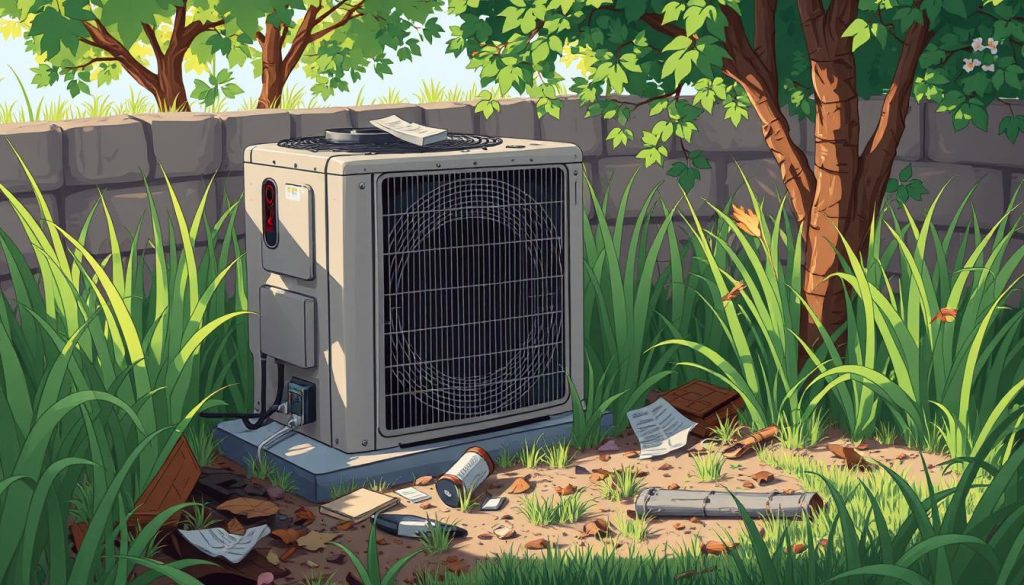
Regular checks and upkeep of your HVAC outdoor unit are crucial. They help it run smoothly and keep your home cool.
Refrigerant Leaks: A Serious Issue
If your HVAC system isn’t cooling your home well, a refrigerant leak might be the cause. Refrigerant is key for cooling, helping your air conditioner work. But, a leak can stop it from cooling right, raising your bills and risking damage.
Signs of a Refrigerant Leak
Spotting a refrigerant leak early can save you trouble. Look out for:
- Ice buildup on the refrigerant lines or coils
- Decreased cooling performance – your home may feel warmer or less comfortable than usual
- Hissing sounds coming from the HVAC unit
Importance of Professional Repair
Fixing a refrigerant leak needs a pro HVAC tech. They have the right tools and know-how to fix it right. DIY or ignoring it can cause more harm and cost more later.
Quickly fixing HVAC refrigerant leaks is key for your system’s health. Knowing the signs of refrigerant leak and getting professional refrigerant leak repair ensures your HVAC works well. This keeps your home cool and comfy all summer.
Sizing and Installation Considerations
The size and installation of your HVAC system greatly affect its cooling power. A HVAC system that’s too small for your home may struggle, especially when it’s very hot. On the other hand, an oversized HVAC unit can cause short-cycling, leading to uneven cooling.
To get your HVAC system right, you need a skilled technician. They’ll consider your home’s size, insulation, and local climate to find the perfect HVAC unit capacity. This careful approach is key for efficient cooling and energy use.
What Factors Determine the Right HVAC System Size?
- The square footage of your home
- The level of insulation in your home
- The local climate and weather patterns
- The number of occupants and their cooling needs
- The orientation and layout of your home
How Can Improper HVAC Installation Affect Cooling?
- Incorrect placement of the outdoor unit can restrict airflow and reduce efficiency.
- Ductwork that is not properly sized or sealed can lead to air leaks, reducing the system’s effectiveness.
- Improper refrigerant charging can result in an underperforming or inefficient cooling system.
- Failure to properly insulate and seal the home can undermine the HVAC system’s efforts to cool the space.
| HVAC System Size | Cooling Capacity (BTUs) | Recommended Home Size |
|---|---|---|
| Small | 12,000 – 18,000 BTUs | 800 – 1,200 sq ft |
| Medium | 18,000 – 24,000 BTUs | 1,200 – 1,600 sq ft |
| Large | 24,000 – 30,000 BTUs | 1,600 – 2,000 sq ft |
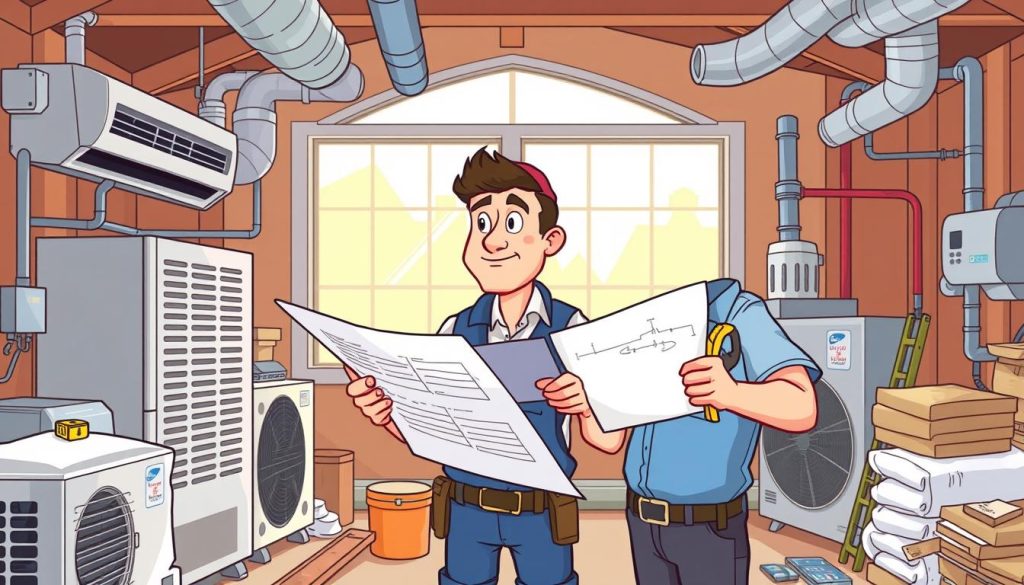
By ensuring your HVAC system is properly sized and installed, you can maximize its cooling efficiency. This way, you’ll enjoy a comfortable, consistent climate in your home all summer long.
Ductwork Problems: Leaks and Obstructions
If your HVAC system is running but your home isn’t cooling, ductwork problems might be the cause. The ductwork spreads cooled air from your air conditioner to your home’s rooms. But, leaks or blockages can stop this air from reaching you, making your home warm and uncomfortable.
Inspecting and Sealing Ductwork
To fix ductwork issues, start by checking your ductwork for damage or blockages. Look for cracks, holes, or loose spots that could be causing leaks. Also, make sure all air vents are open and clear, letting cool air flow.
If you find leaks or blockages, get a pro to fix them. A skilled HVAC technician can find and seal leaks using the right methods. Keeping your ductwork in good shape is key to your HVAC system’s cooling power.
| Common HVAC Ductwork Issues | Potential Causes | Solutions |
|---|---|---|
| Duct Leaks | – Cracks or holes in ductwork – Loose connections – Improper installation |
– Duct leakage testing – Sealing with mastic or foil tape – Replacing damaged sections |
| Duct Obstructions | – Blocked or closed air vents – Buildup of dust, debris, or insulation – Improperly sized ductwork |
– Clearing obstructions – Adjusting vent openings – Replacing or upgrading ductwork |
Fixing ductwork problems helps your air conditioning work better. It ensures cool, comfortable air reaches every room in your home.
Conclusion
When your HVAC system heats but doesn’t cool well, there are many possible reasons. Issues like a faulty thermostat or dirty air filters can cause problems. More serious issues include refrigerant leaks, frozen coils, and equipment that’s too small.
Regular HVAC maintenance can stop many cooling issues before they start. This includes changing air filters and keeping the outdoor unit clean. But, if your problem doesn’t go away or you’re not sure what to do, call a skilled HVAC technician.
Being proactive with HVAC system diagnosis helps keep your home comfortable all year. Proper maintenance and quick action to any problems can extend your system’s life and keep it running efficiently.

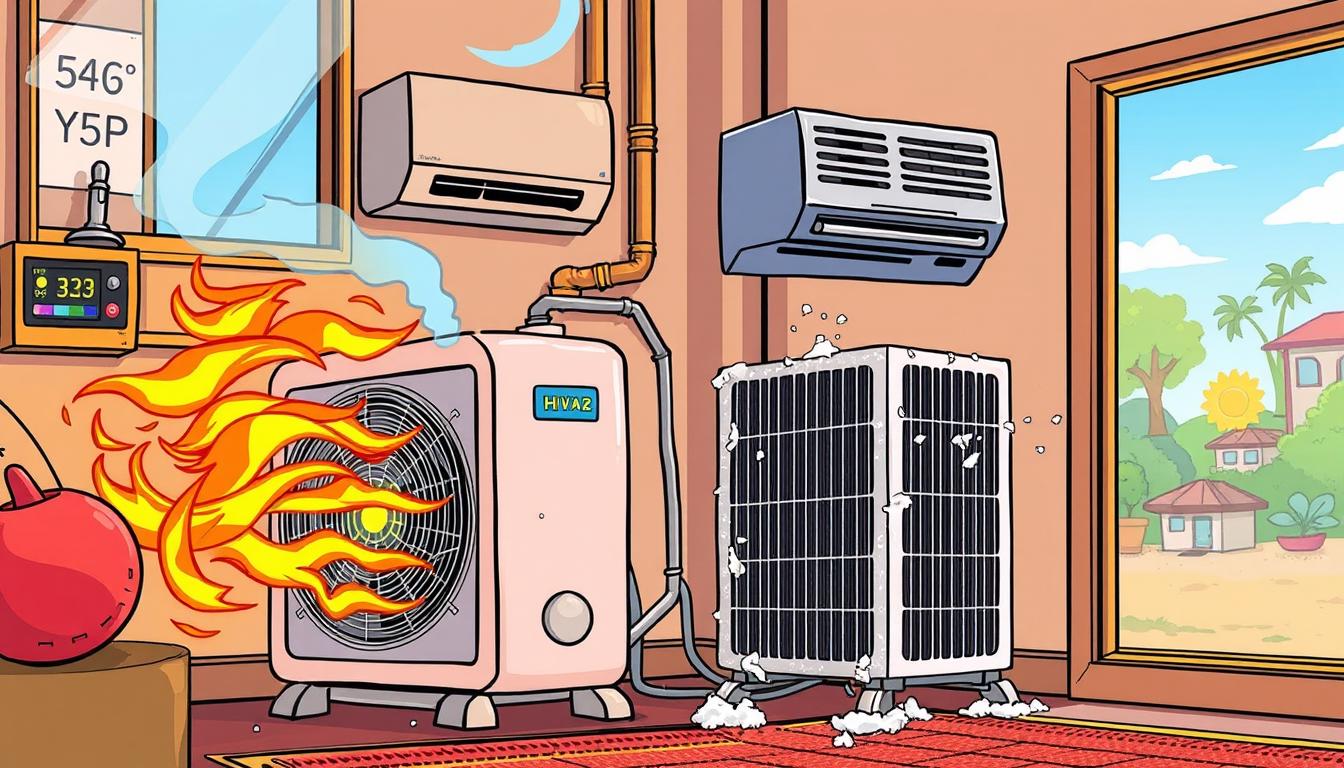

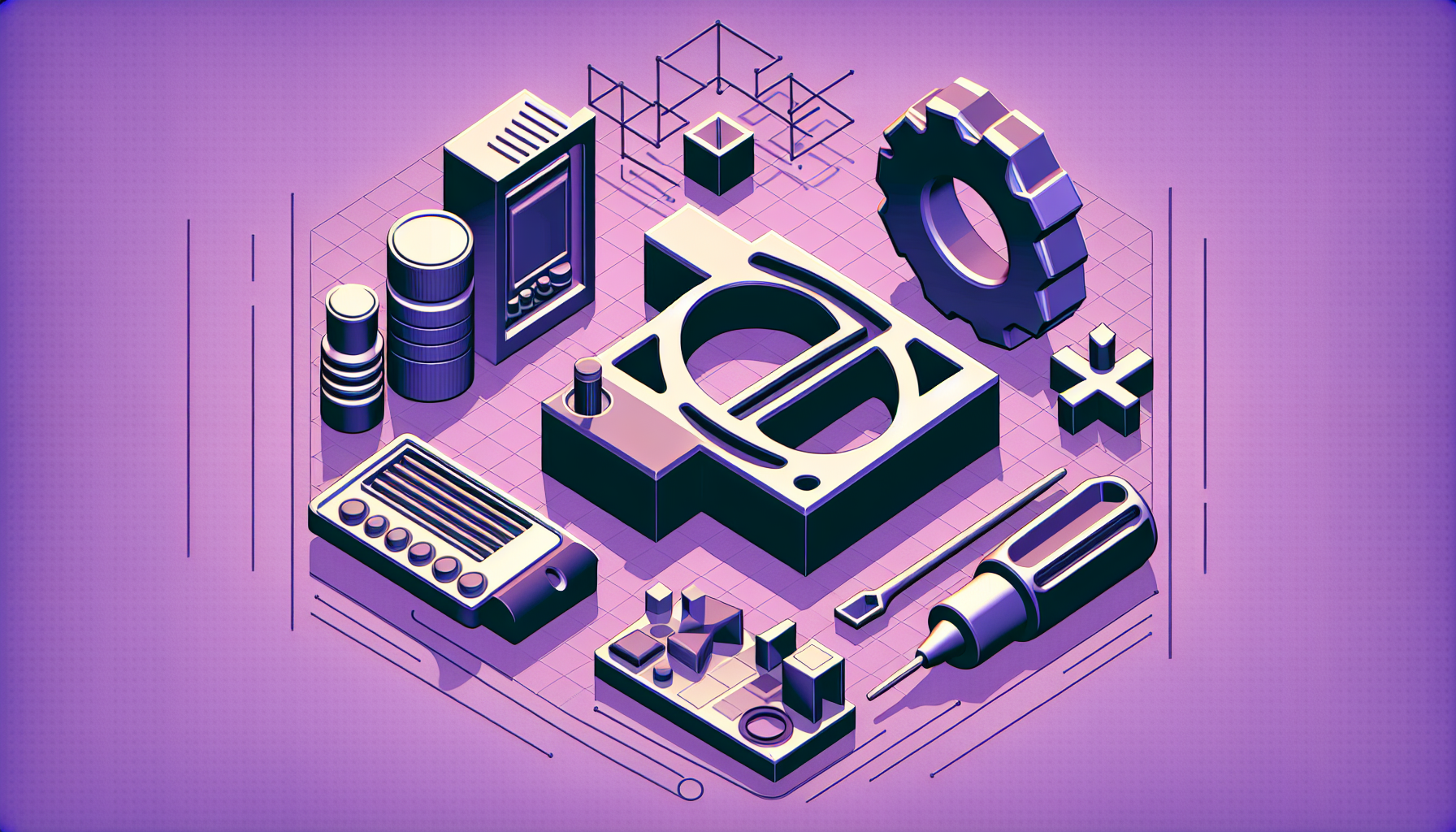
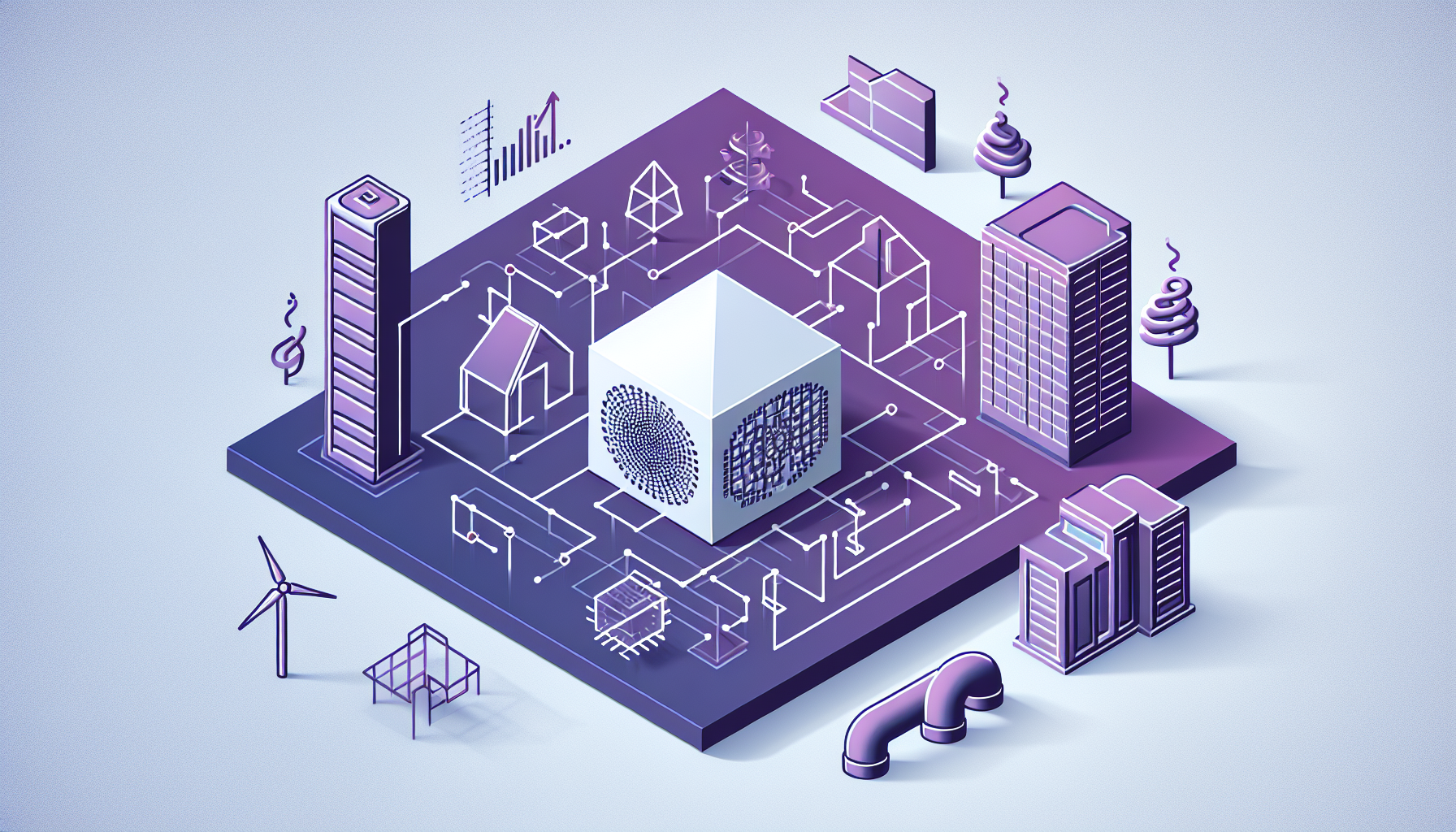
0 Comments